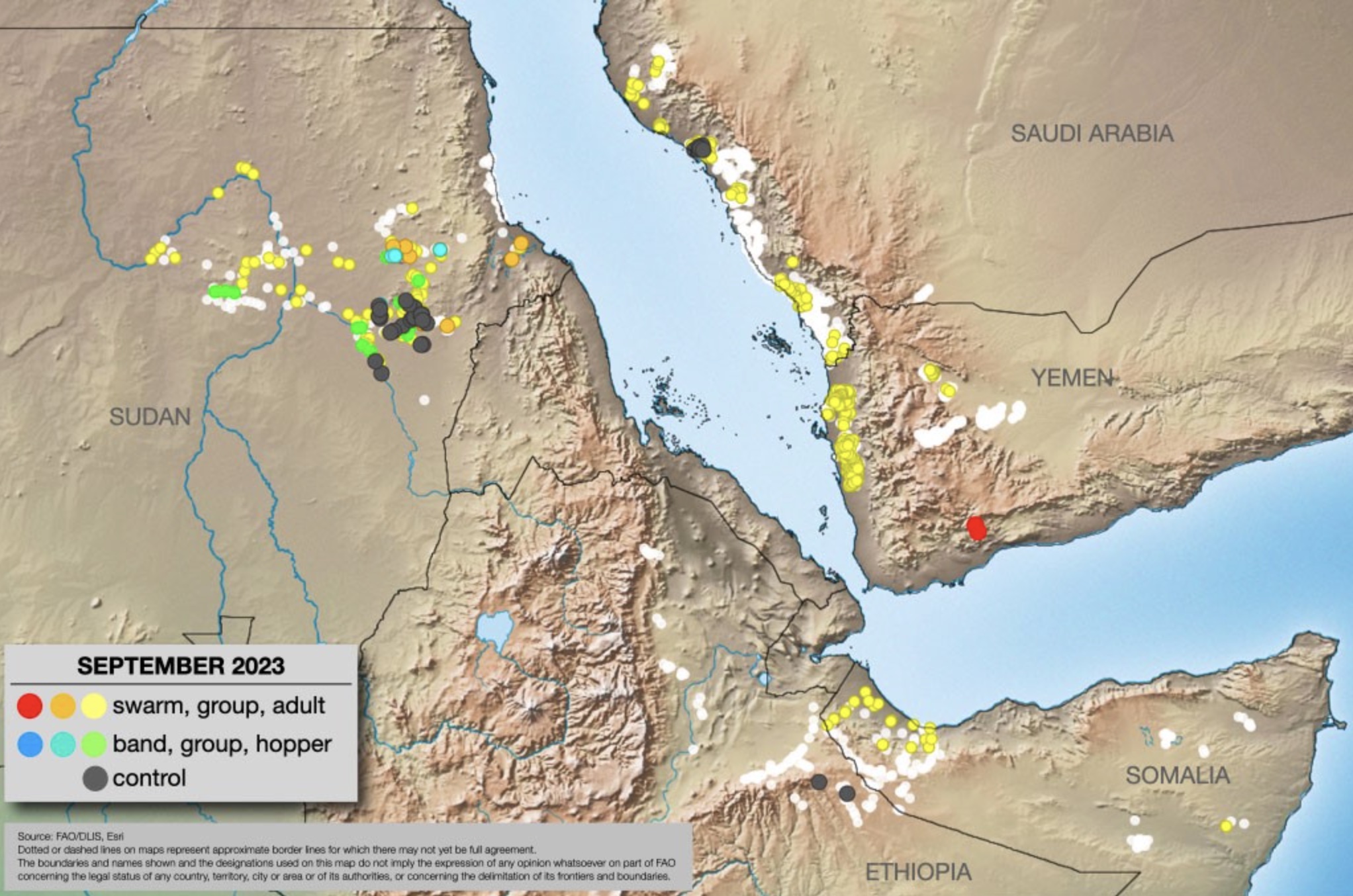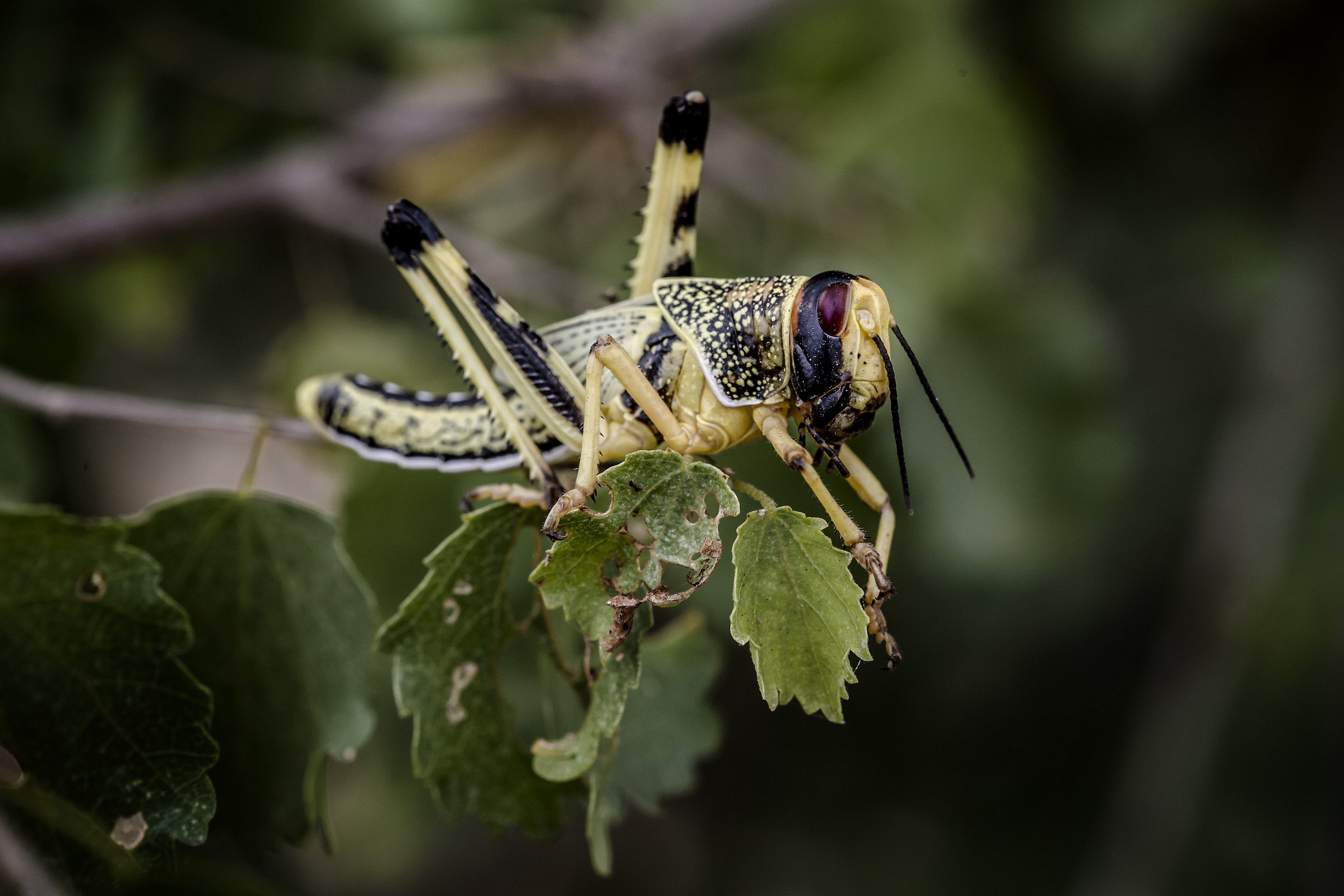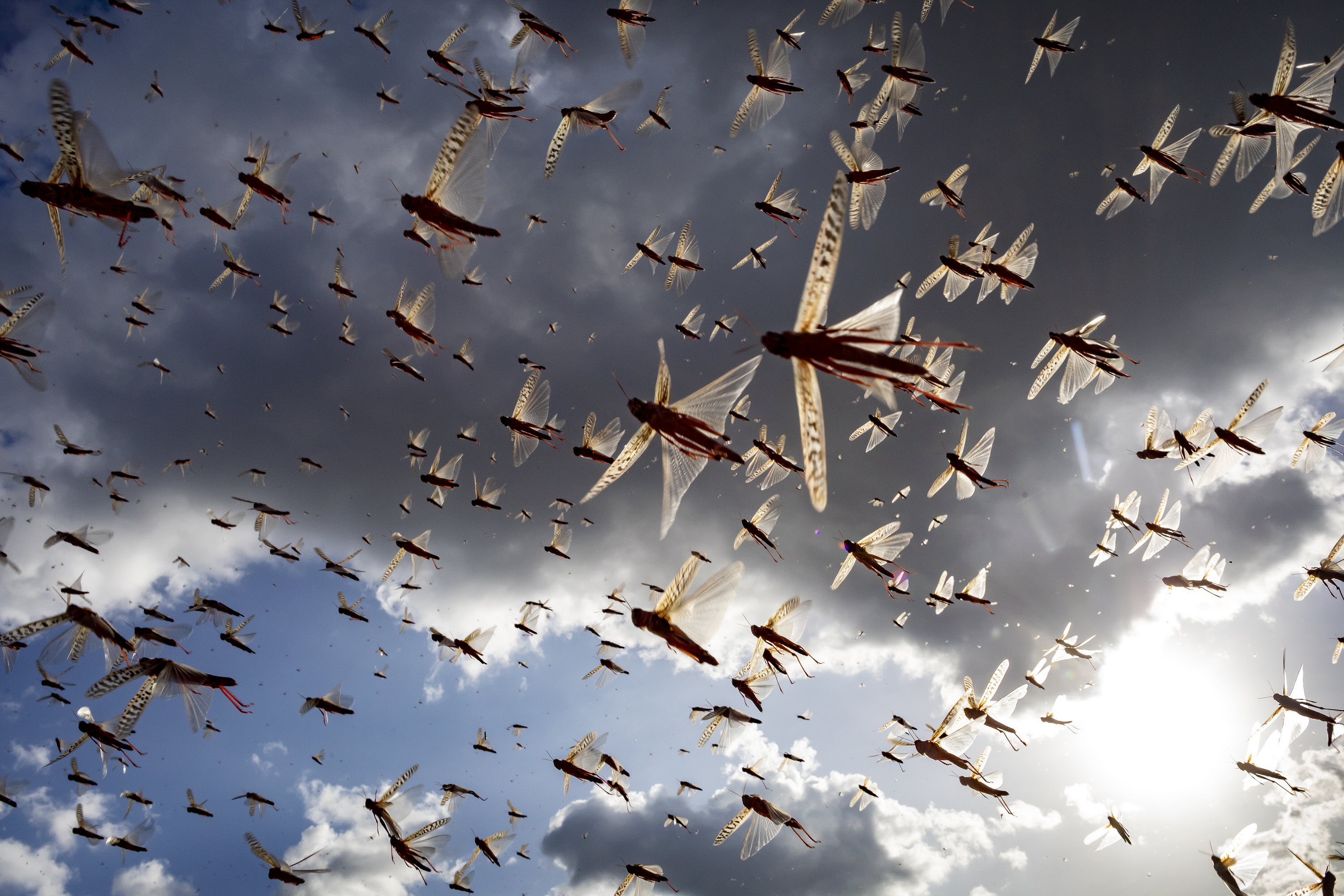4 October 2023: Summer breeding

Key points
- Current situation (breeding): Chad, Mauritania, Oman, Saudi Arabia, Sudan
- Current situation: A few swarms in Ethiopia, Sudan, Yemen; Groups in Oman, Saudi Arabia, Sudan; Adults in Chad, Egypt, Mauritania, Morocco, Niger, Pakistan, Somalia
- Control: small operations in Ethiopia, Oman, Saudi Arabia, Sudan
- October–November: above normal rains in summer breeding areas for small-scale breeding in northern Sahel (Mauritania to western Eritrea)
- Winter season: starts earlier than normal this year on both sides of the Red Sea and Gulf of Aden coast from October to February
The Desert Locust situation was mainly calm during September
Summer breeding occurred in Sudan, Saudi Arabia, Oman, Mauritania, and Chad. A few small groups, bands and swarms occurred in the interior of Sudan, a couple of swarms in Yemen and Ethiopia, and some control in Sudan, Saudi Arabia, Ethiopia, and Oman. Isolated adults were in Niger, Morocco, Egypt, Somalia, and Pakistan. The southwest monsoon withdrew in Indo-Pakistan, and the summer seasons ended because of deficient rainfall.
During the forecast, this year’s summer season is expected to continue longer than usual in a few places of the northern Sahel near northwest Mauritania, Mali, Niger, and Sudan due to above-normal rains predicted in October and November. During the winter season, locusts from the interior of Sudan and Yemen will move to the Red Sea coast where above-normal rains are anticipated during the last dekad of October. As a result, the first generation of breeding will start, especially in Sudan where there may be groups of hoppers and adults, as well as in Saudi Arabia, Yemen and northwest Somalia, and continue until about March.



